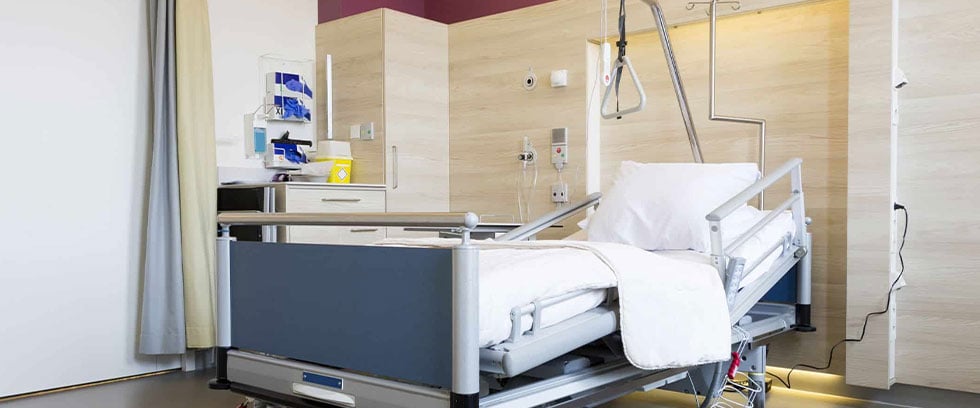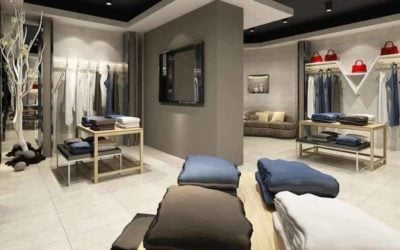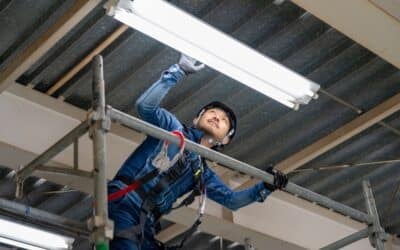How Light Impacts Psychology & Mood in Healthcare Facilities
Lighting is important to our everyday functioning. Adequate light makes it possible to see as we perform tasks. In the healthcare field, these tasks hold a great deal of weight, affecting patients’ health. Sometimes, these tasks are a matter of life and death.
In addition to helping us see, light affects our circadian rhythm, mood, and vitamin absorption. Managing these factors is essential to a smoothly functioning healthcare environment.
Considering the impact lighting has on both patient health and employee comfort and satisfaction, it is beneficial to take a deliberate, strategic approach to lighting for hospitals and healthcare facilities.
Types of Lighting for Healthcare Facilities
Most indoor spaces are lit by a combination of natural light from windows and electric light sources. These sources differ in their wavelength makeup, which means their impacts on human health are different as well.
Sunlight provides a balanced spectrum of light colors, resulting in a neutral white light. This varies slightly by time of day, latitude, and season, but in general, light from the sun contains an even color spectrum.
Most electric light sources contain more concentrated light color spectrums. For example, cool white fluorescents give off a higher concentration of blue light. Blue light signals to the brain to stay awake and be alert. In contrast, warm light creates a relaxed mood.
Advanced LED technology, like TCP’s SOListic bulbs, bridge the gap between natural and artificial sunlight by mimicking the balanced spectrum of sunlight. This way, they avoid the spike in blue light, which causes some artificial light sources to disrupt the body’s natural circadian rhythm.
Lighting For Hospitals and Healthcare Facilities
There are four main areas in which light affects human health: performance of visual tasks; the body’s circadian system; mood and perception; and vitamin D absorption.
Visual Task Performance
One of the most obvious effects of light on humans, visual task performance is also an incredibly important factor, especially when it comes to healthcare settings. If employees are not able to see well, they are not able to provide adequate care to patients and visitors. This can lead to employee irritation and burnout over time. In the most extreme cases, an inability to see well can cause dangerous mistakes.
As light levels increase, performance of visual tasks improve. In this case, artificial light is a sufficient alternative to natural lighting. Sometimes, artificial light—especially sunlight mimicking LEDs like SOListic—are preferable to natural light because they allow light to be finely and consistently controlled.
Age also plays a role in visual tasks. Older people typically require more light in order to complete tasks. As the workforce ages, illumination levels in healthcare facilities is an important factor to consider when designing lighting for healthcare environments.
In a stressful environment like a hospital, nurses and physicians are prone to errors if lighting is insufficient. A subtle factor, lighting can take a chaotic environment and make it unworkable. On the other hand, quality lighting can take a chaotic environment and make it feel slightly more comfortable and efficient. Studies have shown that high work-surface light levels result in fewer errors.
Circadian Rhythm Control
Circadian rhythm includes any physical, mental, or behavioral change that follows a 24-hour cycle. How are these cycles regulated? Primarily by light and dark. Circadian rhythms affect almost all living things, from people to plants and microbes.
When light enters the eye, it signals to the body’s internal clock. When internal rhythms do not line up with workday rhythms—as is the case with doctors and nurses who work the night shift—people will feel drowsy and distracted. Our bodies are naturally wired to function while the sun is out and rest at night. In order to keep seeing patients when they need urgent care, however, many healthcare professionals work against this natural rhythm, staying up at night and sleeping all day.
Lighting can be used strategically to help control the circadian system. Natural and artificial light can work together to maximize alertness for night shift workers.
Mood and Perception
An often overlooked effect of lighting is its impact on mood. This effect is addressed more frequently in residential and hospitality applications, but mood is important for work performance, even in healthcare settings.
Different people are affected by lighting in a variety of ways. Expectations, preferences, and even gender all play a role in how one single individual will be impacted by certain lighting conditions.
As a general rule, however, most people tend to prefer natural light to artificial light for work. Making sure healthcare buildings have plenty of natural sunlight from windows, glass doors, and skylights can maximize natural light, therefore maximizing positive moods for healthcare professionals and patients alike.
Where natural light is not possible—such as in internal rooms and overnight—sunlight mimicking bulbs like TCP’s SOListic LEDs are a good alternative.
Vitamin D Absorption
Most of the vitamin D in our blood can only be gained from exposure to light. Ultraviolet radiation found in natural sunlight is a key factor in the process of absorbing vitamin D.
For most people, meeting healthy vitamin D requirements happens naturally with typical daily sun exposure. But some people, including chronically ill institutionalized individuals and shift workers—may not receive enough exposure to the sun to metabolize sufficient amounts of vitamin D.
Once again, this makes a compelling argument for sufficient natural light in healthcare settings.
TCP Healthcare Facility Lighting
One way to promote workplace satisfaction and healing in healthcare facilities is to invest in high quality hospital lighting. Bright, even lighting helps healthcare providers to deliver effective care and maintain alertness, even through long days and night shifts.
Patients feel most relaxed under lighting that is designed to promote positive health outcomes.
Finally, the savings from energy efficient LED light bulbs frees up room in healthcare facility budgets, which can be allocated toward staff and technology, much to the benefit of patients.
TCP creates high quality LED lights that help you provide the best possible care for patients. LED hospital lighting helps staff work efficiently and stay alert, while putting patients at ease and elevating mood.
Interested in healthcare lighting from TCP? Click here to learn more.







